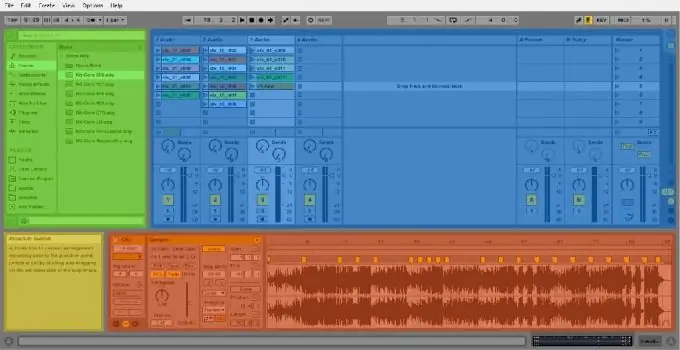The first step in getting to know a new program is to study its user interface. At first glance, a large number of different elements can be scary, but everything becomes easier if you break them into separate groups.

Most of your work in Ableton Live happens from the home screen. This screen consists of several blocks, each of which controls specific aspects of your project depending on the type of document you are working on.
Along the edges of the screen are triangular pointers that, when clicked, can collapse and expand individual blocks.
You can also change the size of the main screen blocks - to do this, move the cursor over the edge of the desired block so that a double-sided arrow appears.
If you have multiple monitors or one large monitor, then you can open a second window to display all blocks of the main screen at the same time. To do this, select the Second Window command from the View menu or press the key combination [CTRL] + [SHIFT] + [W] on Windows or [CMD] + [SHIFT] + [W] on Mac.
You can launch Ableton Live in full screen mode by choosing the Full Screen command from the View menu or by pressing the [F11] key. To exit full screen mode, click on the arrow that appears in the lower right corner of the screen, or the [F11] key.






